Best 20000mAh Solar Power Banks for Outdoor Adventures
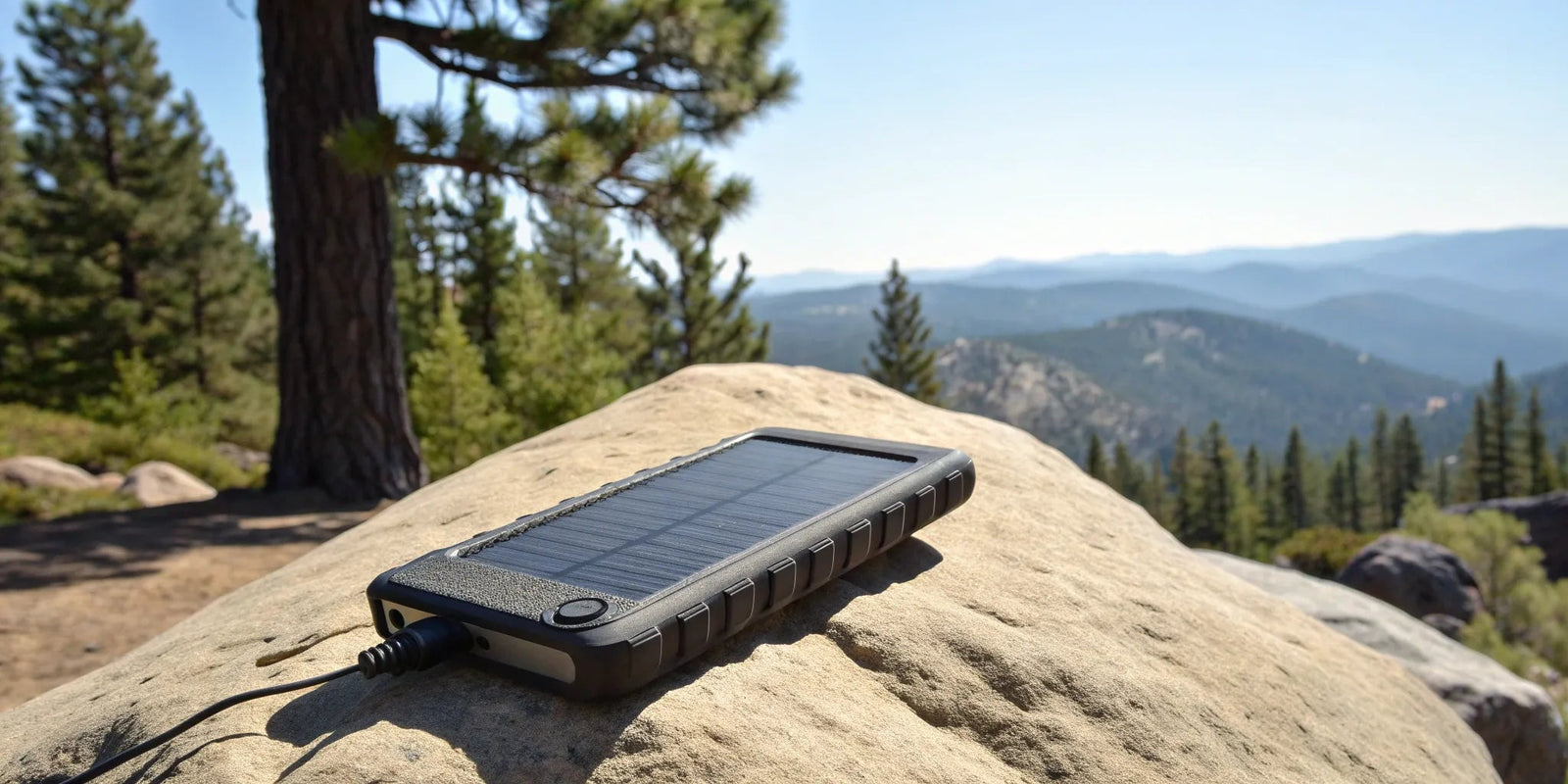
The market is flooded with portable chargers that make big promises, but few deliver when you're truly off-grid. Many fail to hold a charge, take forever to power up your devices, or have solar panels that are more for show than function. A subpar power bank isn't just a waste of money; it can leave you stranded. We believe your gear should be as resilient and ready for adventure as you are. That’s why we’ve put together this comprehensive guide to finding the best solar charger 20000mah power bank. We’ll cover the must-have features, compare top models, and give you practical tips to find a reliable partner for your next trip.

Portable Solar Power Bank 26800mAh - 99Wh Fast Charger
Lithium Polymer (Li-Po) battery. PD fast charging. Holds up to 8 days of reliable power on a single charge. Boasts a charging speed 50% faster than ordinary portable chargers.
Shop NowKey Takeaways
- Focus on Features That Matter Outdoors: A high mAh capacity is a great start, but true reliability comes from a combination of fast-charging ports like USB-C PD, a rugged and water-resistant design, and verified safety certifications.
- Wall Charge First, Use Solar to Extend Your Trip: Always start your adventure with a 100% charge from a wall outlet. Think of the solar panel as your way to top off your battery and stay connected when you're completely off-grid, not as a primary method for a full recharge.
- Simple Habits Greatly Extend Battery Health: To get the most out of your power bank, keep the solar panels clean and angled toward the sun. For long-term care, store it with a partial charge in a cool, dry place to ensure it's ready for your next adventure.
What Makes a Solar Power Bank Stand Out?
When you’re miles from the nearest outlet, a solar power bank isn't just a gadget—it's your connection to safety, navigation, and communication. But with so many options on the market, it’s easy to get lost in the specs. The truth is, not all solar chargers are built for the demands of the great outdoors. A truly exceptional solar power bank shines in four key areas: its power capacity and speed, the efficiency of its solar panels, its rugged durability, and its built-in safety features. Let's break down what you should be looking for in each of these categories to find a reliable partner for your next adventure.
Battery Capacity and Charging Speed
First, let's talk power. Battery capacity is measured in milliampere-hours (mAh), and for a serious outdoor trip, 20,000mAh is a great starting point. A 20,000mAh power bank typically holds around 74Wh of energy, which is enough to charge a standard smartphone 4-6 times. But capacity is only half the story. Charging speed is what gets your devices back in action quickly. Look for power banks that support fast-charging standards like Power Delivery (PD), especially if you’re charging larger devices like tablets or cameras. Pairing your power bank with high-quality ProSeries USB-C cables ensures you’re getting the fastest, most efficient charge possible, so you can spend less time waiting and more time exploring.
Solar Panel Efficiency
The "solar" in a solar power bank is its superpower, but its effectiveness varies wildly. Solar panel efficiency directly impacts how quickly your portable charger powers up in the sun. A higher efficiency percentage means the panel can convert more sunlight into usable energy, which is critical when you only have a few hours of good daylight. Keep in mind that solar charging is meant for topping off your power bank or for emergency situations, not for a full charge from zero. For that, you'll always want to start your trip with a full battery charged from one of your fast wall chargers at home. Think of the solar panel as your backup plan to keep you going when you're completely off-grid.
Durability for Any Adventure
Your outdoor gear needs to be tough, and your power bank is no exception. A standout model is built to withstand the elements. Look for features like a rugged, shock-absorbent casing and a high IP (Ingress Protection) rating, such as IP67, which means it's dust-tight and can survive being submerged in water. The build quality should feel exceptional, with a focus on durable materials that can handle being dropped or jostled around in a pack. When you’re relying on a device in the wild, you need to know it won’t fail you. That’s why investing in fast portable power designed for adventure is always the right call.
Built-in Safety Features
Packing this much power into a small device requires serious safety measures. A reliable solar power bank will have multiple protection systems to prevent overcharging, overheating, short-circuiting, and excessive current. Look for certifications that prove the product has been tested for safety and quality. For instance, each KEUTEK power bank is certified to meet CE, FCC, and RoHS standards, giving you peace of mind. A manufacturer that stands behind its product with a strong warranty is another great sign. The KEUTEK Difference includes an industry-leading lifetime warranty, ensuring your investment is protected and your devices are always charged safely.
Our Top Picks: The Best 20000mAh Solar Power Banks
After putting several models to the test, we've narrowed down the best 20000mAh solar power banks you can count on. Each one has unique strengths, so you can find the perfect match for your next adventure, whether you're camping for a week or preparing for an emergency. We looked at everything from charging speed and durability to portability and special features to bring you this list of reliable power sources that won't let you down when you're off the grid.
KEUTEK Solar Power Bank
When it comes to sheer reliability, the KEUTEK Solar Power Bank is in a class of its own. It’s designed to provide power for up to eight days on a single charge, making it a true workhorse for extended trips. The clear digital display is a standout feature, letting you see your exact power level at a glance—no more guessing games. What really sets it apart is the industry-leading lifetime warranty and commitment to safety, with CE, FCC, and RoHS certifications. It’s the kind of dependable portable power you can trust for years to come.
BLAVOR Portable Charger
If your biggest fear is seeing that dreaded low-battery notification, the BLAVOR solar charger is an excellent solution. It packs a high-capacity battery with fast-charging capabilities, designed to get your devices back up and running quickly. This power bank is a fantastic companion for any outdoor activity where you might be far from a traditional power source. Its combination of a large battery and efficient charging helps take the anxiety out of staying connected, letting you focus more on your adventure and less on your battery percentage.
Durecopow Solar Charger
For those whose adventures get a little rough, the Durecopow solar charger is built to handle just about anything you can throw at it. Its rugged design is water-resistant, shock-resistant, and dustproof, making it a top contender for serious outdoor enthusiasts. Whether you’re hiking through a dusty trail or get caught in an unexpected downpour while camping, this power bank is engineered to keep performing. The Durecopow charger ensures your gear stays powered up, no matter how challenging the environment gets.
Anker Solar Power Bank
Anker has a well-earned reputation for excellent build quality, and its solar power bank is no exception. From the moment you hold it, you can feel its durable and well-made construction. It delivers solid charging speeds of up to 15W, which is more than enough to keep your phone, tablet, and other essential devices powered up during your trip. This efficiency, combined with its sturdy design, makes the Anker Power Bank a reliable choice for anyone who values both performance and durability in their outdoor gear.
RAVPower Solar Bank
RAVPower’s solar power banks are consistently recognized for their durability and efficiency, making them a go-to for outdoor adventurers. These chargers are specifically designed to provide a dependable source of power when you need it most, whether you're on a multi-day trek or just spending a day at the park. The brand focuses on creating products that can withstand the elements while delivering consistent performance. A RAVPower solar bank is a solid investment for anyone looking for a reliable power source that’s built for the great outdoors.
iSmart Solar Charger
The iSmart solar charger is a great pick for tech lovers who want advanced features in a rugged package. It uses smart technology to deliver fast, efficient charging to your devices while being tough enough to handle harsh outdoor conditions. This makes it a versatile option for anyone who needs a reliable power source that can keep up with an active lifestyle. The iSmart charger is engineered for performance, ensuring you have the power you need to stay connected, capture photos, and use your GPS while exploring.
Solar vs. Wall Charging: What's the Difference?
One of the best things about a solar power bank is its versatility. You have two ways to fill it up: by plugging it into a wall outlet or by letting it soak up the sun. While both methods get the job done, they work very differently in terms of speed and reliability. Think of wall charging as your primary, high-speed option for getting your power bank ready before a trip. It’s fast, consistent, and predictable.
Solar charging, on the other hand, is your ace in the hole for when you’re off the grid. It’s the feature that keeps you connected when you’re miles from the nearest outlet, turning sunlight into usable power for your devices. It’s not designed to be as fast as a wall charger, but it provides incredible freedom and peace of mind. Understanding how each method works will help you manage your power more effectively, whether you’re preparing for a weekend camping trip or a power outage at home. Let’s break down the key differences so you know exactly what to expect.
How Solar Charging Actually Works
At its core, solar charging is pretty straightforward. The small photovoltaic (PV) panels on your power bank capture sunlight and convert it into electrical energy, which is then stored in the internal battery. The key factor here is solar panel efficiency. A higher efficiency percentage means the panel can convert more sunlight into usable energy in the same amount of time. So, a power bank with a more efficient panel will charge itself faster in the sun than one with a lower rating. This process is entirely dependent on the quality and intensity of the sunlight it receives, making it a powerful but variable source of energy.
Comparing Charging Speeds
Let's be direct: charging your power bank from a wall outlet will always be faster than charging it with its built-in solar panels. Many modern solar power banks, including those from KEUTEK, offer fast charging using standards like Power Delivery (PD). When you plug it into one of our fast wall chargers, you can take a 20,000mAh battery from empty to full in just a few hours. Solar charging is much slower because the panels are small and sunlight varies. It’s best used for topping off your battery throughout the day or for emergency situations, not for a quick, full charge from zero.
The Best Conditions for Solar Charging
To get the most out of your solar panels, you need strong, direct sunlight. The ideal scenario is a clear, cloudless day with the power bank positioned so the panels are perpendicular to the sun’s rays. Even a little bit of cloud cover, shade from a tree, or a hazy sky can significantly reduce the charging speed. For the best results, try to place it in direct sun during the middle of the day when the sun is at its highest point. Think of it as a slow and steady trickle charge that works best when conditions are just right.
Breaking Down Power Output and Efficiency
When we talk about a power bank's capacity, you'll see the term "mAh" (milliampere-hours). A higher mAh means the power bank can charge your devices more times before it needs a recharge. For example, a 20,000mAh power bank can typically recharge a standard smartphone about four times. Another useful metric is Watt-hours (Wh); a 20,000mAh power bank holds about 74Wh of energy. Just as important is the power output, which determines how fast the power bank can charge your phone or tablet. To take advantage of fast-charging outputs, you’ll need a quality cable like our ProSeries USB-C to deliver that power safely and efficiently.
Must-Have Features for Your Solar Power Bank
When you’re comparing solar power banks, it’s easy to get lost in the technical specs. But a few key features really separate the good from the great. Think about how you’ll actually use it—whether you’re on a multi-day hike, preparing for a power outage, or just need a reliable backup for a family road trip. The right power bank isn’t just about holding a charge; it’s about being a dependable tool when you need it most. Let’s break down the essential features that make a solar power bank a worthwhile investment for any adventure.
Support for Multiple Devices
If you’re heading outdoors, you’re likely carrying more than just your phone. Think about your GPS, camera, headlamp, and maybe even a smartwatch. A 20,000mAh power bank has enough juice to charge multiple gadgets at once, so you don’t have to pick and choose what stays powered on. This capacity is perfect for keeping a small group’s devices running or for getting you through a weekend off-grid without any low-battery anxiety. Having a reliable source of fast portable power means you can focus on the experience instead of rationing your battery life.
Port Selection and Compatibility
Look for a power bank with a variety of ports, including both USB-A and USB-C. This ensures you can charge older and newer devices without carrying a bunch of different adapters. Many modern power banks also feature Power Delivery (PD), a fast-charging standard that can power up your devices in a fraction of the time. When you’re trying to get a quick charge before hitting the trail or during a short break, having a fast car charger or a PD-enabled power bank makes a huge difference. It’s all about getting your gear ready to go as quickly and efficiently as possible.
Decoding Waterproof and Dustproof Ratings
Your gear needs to be as tough as you are. A solar power bank designed for the outdoors should be able to handle dirt, rain, and the occasional drop. Look for models that are specifically marketed as waterproof, shockproof, and dustproof. You can often find an IP (Ingress Protection) rating, which tells you exactly how protected it is. For example, a rating of IP67 means it’s completely dust-tight and can be submerged in water. This durability ensures your power source won’t fail you when you’re facing unpredictable weather or rugged terrain.
Essential Emergency Features
The best solar power banks come with built-in features that are genuinely useful in an emergency. A powerful, integrated flashlight with multiple settings, including an SOS strobe mode, can be a lifesaver if you’re caught out after dark or need to signal for help. These aren’t just gimmicks; they are practical tools that add another layer of safety to your adventures. Having these features provides peace of mind, knowing you have a multi-functional device that can help you in a pinch, whether you’re deep in the backcountry or dealing with a storm at home.
Key Safety Protections
Finally, don’t overlook safety certifications. A quality power bank should have protections against overcharging, overheating, and short-circuiting. Look for certifications like CE, FCC, and RoHS, which guarantee the product has met high safety and environmental standards. These aren’t just random letters; they’re your assurance that the power bank is safe for you and your expensive electronics. A solid warranty also shows that the company stands behind its product. Investing in a power bank with proven safety and quality standards protects your gear and gives you confidence in its reliability.
How to Choose the Right Solar Power Bank for You
Picking the right solar power bank isn't just about finding one with a high capacity. It's about finding a reliable partner for your adventures, travels, or emergency kit. The best choice for you depends entirely on your lifestyle, the gear you use, and the environments you'll be in. Think of it as an investment in staying connected and safe. By considering a few key factors, you can find a power bank that won't let you down when you need it most.
Match the Charger to Your Devices
Before you buy, take a quick inventory of the devices you plan to charge. Your smartphone, tablet, GPS unit, and camera all have different power needs. Check that the power bank has the right ports to connect your gear, like USB-A for older devices and USB-C for modern ones. More importantly, look for fast-charging capabilities. A power bank that supports standards like Power Delivery (PD) can charge your devices significantly faster, which is a huge advantage when you're on the move. Pairing it with a high-quality cable, like a ProSeries USB-C cable, ensures you get the maximum charging speed your device can handle.
Consider Your Environment
Where will you be using your solar power bank? If you’re a hiker, camper, or outdoor enthusiast, you need a unit built to withstand the elements. Look for power banks that are water, dust, and shock-resistant. A great way to gauge this is by checking the IP (Ingress Protection) rating. For example, a rating of IP67 means the device is completely dust-tight and can be submerged in water. A rugged exterior made from durable materials also provides extra protection against accidental drops on the trail. This durability gives you the confidence that your power source will keep working, no matter what your adventure throws at it.
Find the Right Price Point
Solar power bank prices can vary, but you can generally find a quality 20000mAh model for between $30 and $70. While it might be tempting to go for the cheapest option, price often reflects the quality of the internal components, the efficiency of the solar panels, and the overall durability. Think of it as an investment in reliability. A slightly more expensive model from a reputable brand may offer faster charging, better safety features, and a longer lifespan. Consider your budget, but weigh it against the features that are most important for your needs to find the best value.
Check the Warranty Coverage
A company’s warranty tells you a lot about how much they stand behind their product. A power bank with a short or non-existent warranty can be a red flag. Look for brands that offer solid coverage, as this provides peace of mind and protects your purchase. For instance, every KEUTEK portable power solution is backed by a lifetime warranty. Also, check for safety certifications like CE, FCC, and RoHS. These certifications mean the product has been tested to meet high safety and quality standards, protecting both you and your devices from issues like overcharging or short-circuiting.
Get the Most Out of Your Solar Power Bank
Owning a solar power bank is a game-changer for staying connected on the go, but getting the best performance and longest life out of it requires a little know-how. Think of it like any other piece of essential gear—proper use and care make all the difference. By following a few simple practices, you can ensure your power bank is always ready to deliver reliable power when you need it most, whether you're on a remote trail or weathering a power outage at home. These tips will help you maximize its efficiency, protect its internal components, and keep it in top shape for years of adventures.
Tips for Optimal Sun Exposure
To get the most efficient charge, placement is everything. The performance of your device is directly tied to its solar panel efficiency, which determines how much sunlight it can convert into energy. For the best results, find a clear, open space and angle the solar panels directly toward the sun. As the sun moves across the sky, try to reposition your power bank every couple of hours to maintain that direct angle. Avoid placing it behind windows, as glass can filter out some of the UV rays and significantly slow down the charging process. Laying it flat on the ground is good, but propping it up to face the sun is even better.
Simple Maintenance for Longevity
A little care goes a long way in extending the life of your solar power bank. The most important task is to keep the solar panels clean. Dust, dirt, and smudges can block sunlight and reduce charging efficiency. Simply wipe the panels with a soft, dry cloth before you set it out to charge. It’s also a good idea to periodically check the charging ports for any debris that could prevent a solid connection. When you invest in a quality device, you can feel confident in its durability. For example, every KEUTEK power bank is backed by a lifetime warranty and built to meet rigorous safety standards, giving you one less thing to worry about.
How to Store Your Power Bank Correctly
When you’re not out exploring, storing your power bank properly is crucial for protecting its battery health. Keep it in a cool, dry place where temperatures stay between 30 and 100 degrees Fahrenheit. Never leave it in a hot car or any location where temperatures could soar above 140 degrees, as extreme heat can permanently damage the battery cells. For long-term storage, it’s best to leave the power bank with about a 50% charge. Storing it fully charged or completely empty can strain the battery over time. This simple step ensures your fast charging portable power is ready to go when you are.
Manage Extreme Temperatures
Just as you protect your power bank during storage, you need to manage its temperature during use. Both extreme heat and cold can negatively affect battery performance and longevity. While charging, it's normal for the device to get warm, but avoid leaving it in direct, intense sunlight for extended periods after it's fully charged. If you're in a very cold environment, try to keep the power bank insulated in a pocket or inside your pack to preserve its efficiency. A great rule of thumb for daily use is to keep the battery level between 20% and 80%. Avoiding full charge cycles can significantly extend the battery's overall lifespan.
Travel Safely With Your Power Bank
A 20,000mAh power bank is the perfect travel companion, capable of recharging a typical smartphone about four times. When you fly, remember that TSA regulations require all power banks to be packed in your carry-on luggage, not your checked bags. Most airlines have a limit of 100 watt-hours (Wh) per battery, and a 20,000mAh unit falls well below that threshold, so you can travel without worry. For road trips, having a reliable power source is just as important. Pairing your power bank with a fast car charger ensures you can keep all your devices topped off between destinations, so you arrive with everything fully charged.
Related Articles
- The Best Solar Power Banks for Outdoors and Travel
- 3 Best Solar Power Banks for Off-Grid Power (2025)
- Top Solar Power Banks for 2025 – Expert Reviews & Picks
- Best Solar Power Banks of 2025: Top Picks & Reviews

Portable Solar Power Bank 26800mAh - 99Wh Fast Charger
Lithium Polymer (Li-Po) battery. PD fast charging. Holds up to 8 days of reliable power on a single charge. Boasts a charging speed 50% faster than ordinary portable chargers.
Shop NowFrequently Asked Questions
How long will it actually take to charge my power bank using only solar power? Think of the solar panel as a trickle charger for emergencies or for topping off your battery on a sunny day. Charging a 20,000mAh power bank from empty to full using only its small solar panel could take several days of perfect, direct sunlight. For this reason, you should always start your trip with a full battery charged from a wall outlet. The solar feature is your backup plan to keep you going when you're completely off-grid, not your primary charging method.
Is a 20,000mAh power bank the right size for me? A 20,000mAh capacity is a fantastic sweet spot for most adventures. It holds enough power to recharge a standard smartphone about four to six times, making it perfect for a long weekend trip or for keeping multiple devices like a GPS and a headlamp powered up. If you're traveling with family or have more power-hungry gear like a tablet or camera, this size ensures you have plenty of juice without being too heavy or bulky in your pack.
Can I really leave my solar power bank out in the rain? If your power bank has a high Ingress Protection (IP) rating, like IP67, it is designed to be completely dust-tight and can handle being submerged in water for a short time. This means it can definitely survive an unexpected rainstorm. However, it's always a good practice to protect your gear from the elements when you can. While it's built to be tough, keeping it dry when not in use will help ensure its long-term performance.
Do I need special cables to get the fastest charge for my devices? To get the fastest possible charge, your power bank, your device, and your cable all need to support modern fast-charging standards like Power Delivery (PD). While any standard cable will charge your device, using a high-quality cable built for higher power output ensures you get that speed safely and efficiently. A well-made cable is a crucial part of the system that prevents power loss and protects your electronics.
Is it safe to travel with a 20,000mAh power bank on an airplane? Yes, you can absolutely fly with a 20,000mAh power bank. The key rule from the TSA is that all power banks must be packed in your carry-on luggage, not your checked bags. Most airlines have a limit of 100 watt-hours (Wh) for lithium-ion batteries, and a 20,000mAh power bank comes in around 74Wh, which is well under that limit. You can travel with confidence knowing your power source is compliant and ready for your trip.


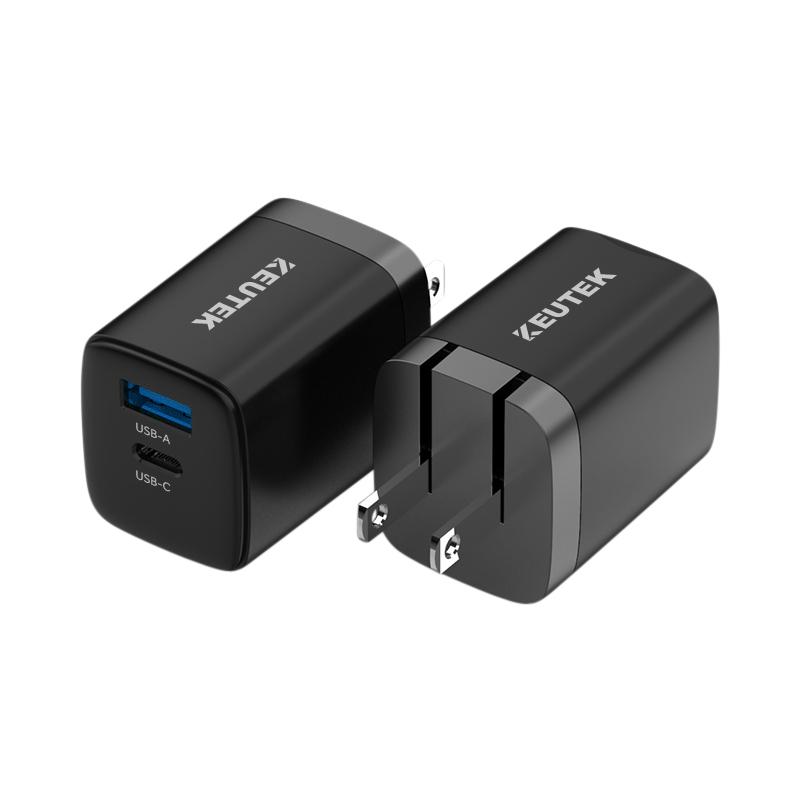
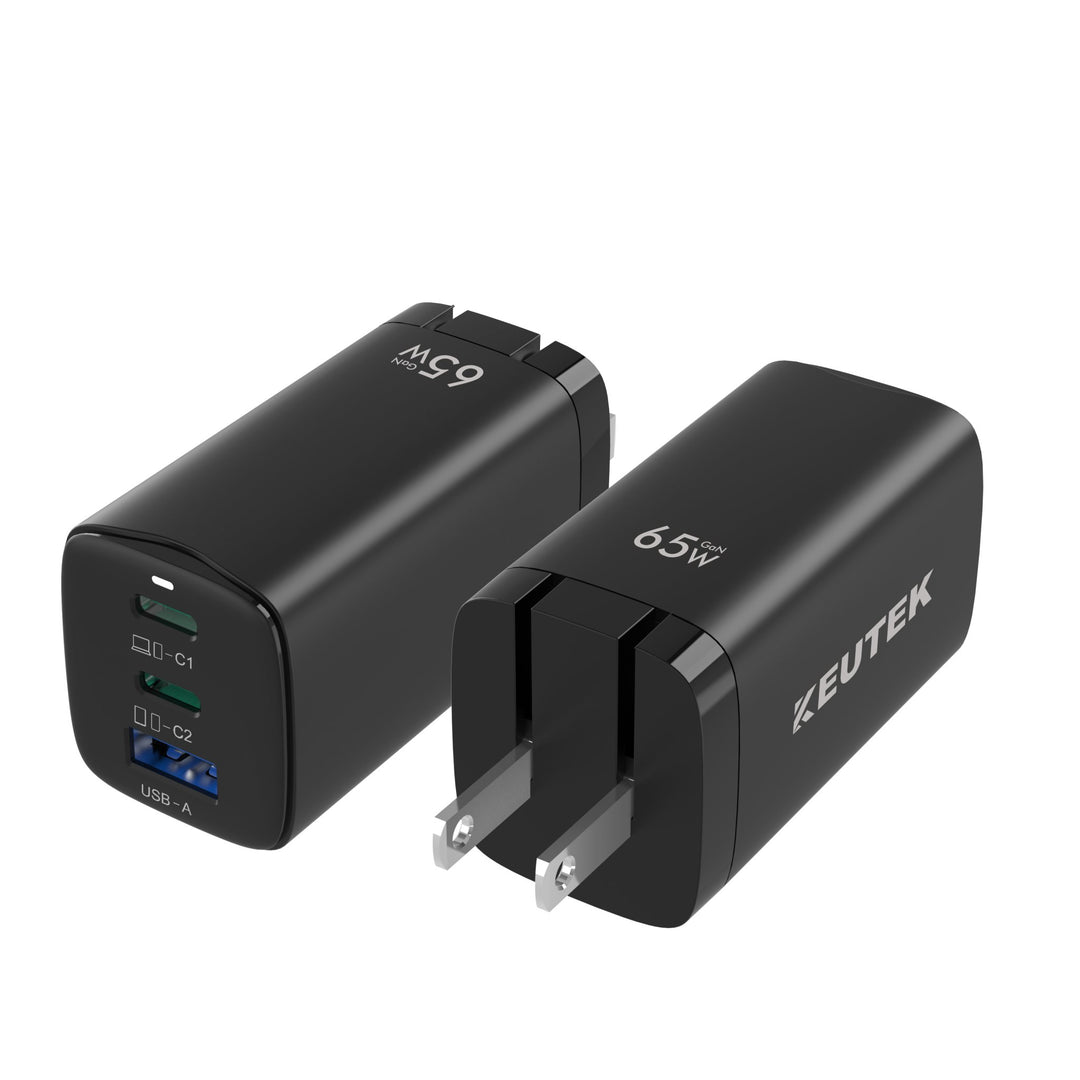

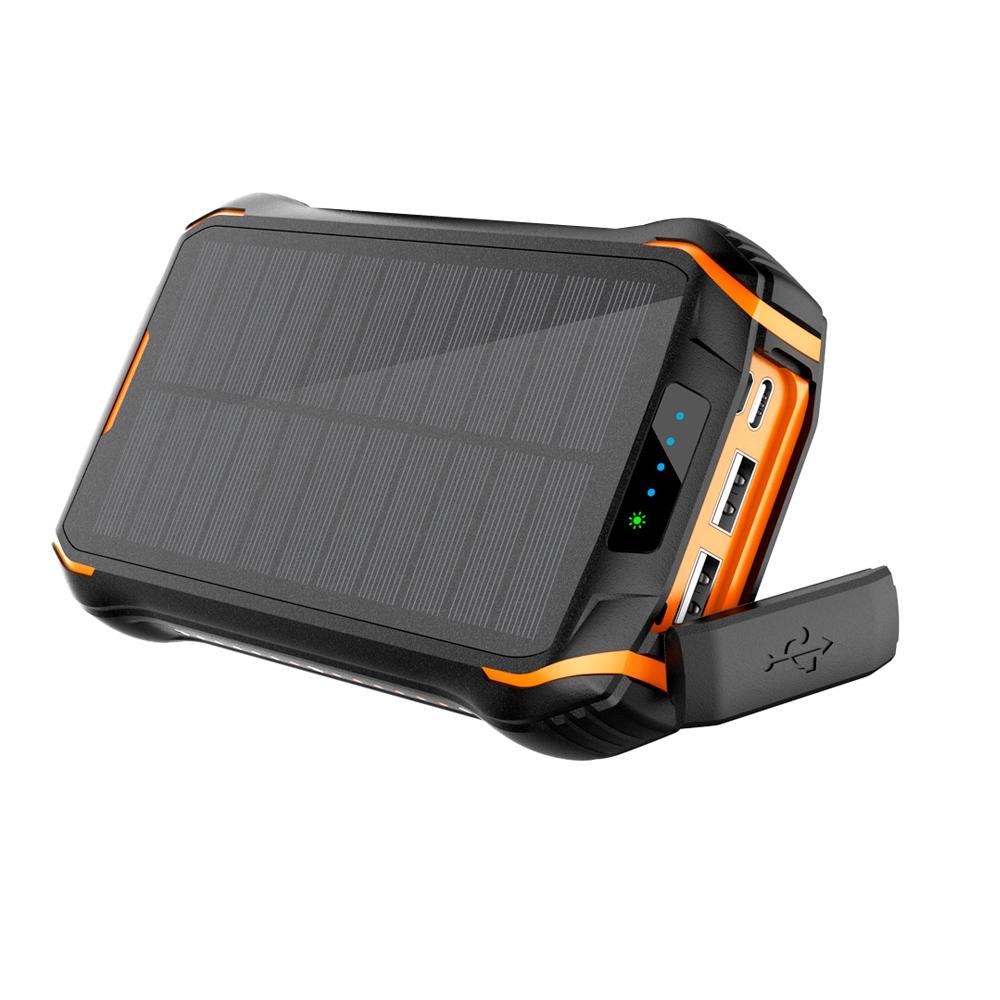
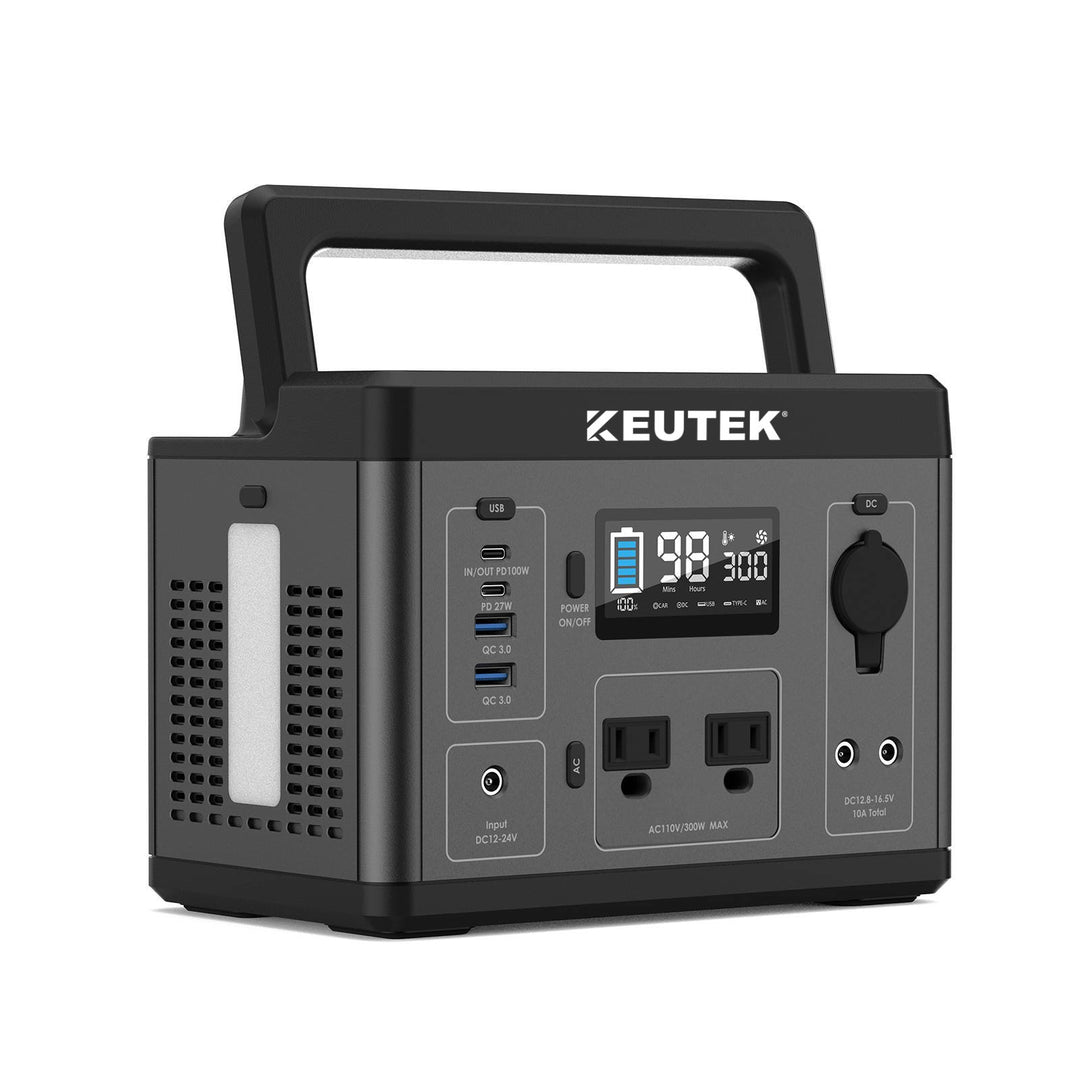
Leave a comment